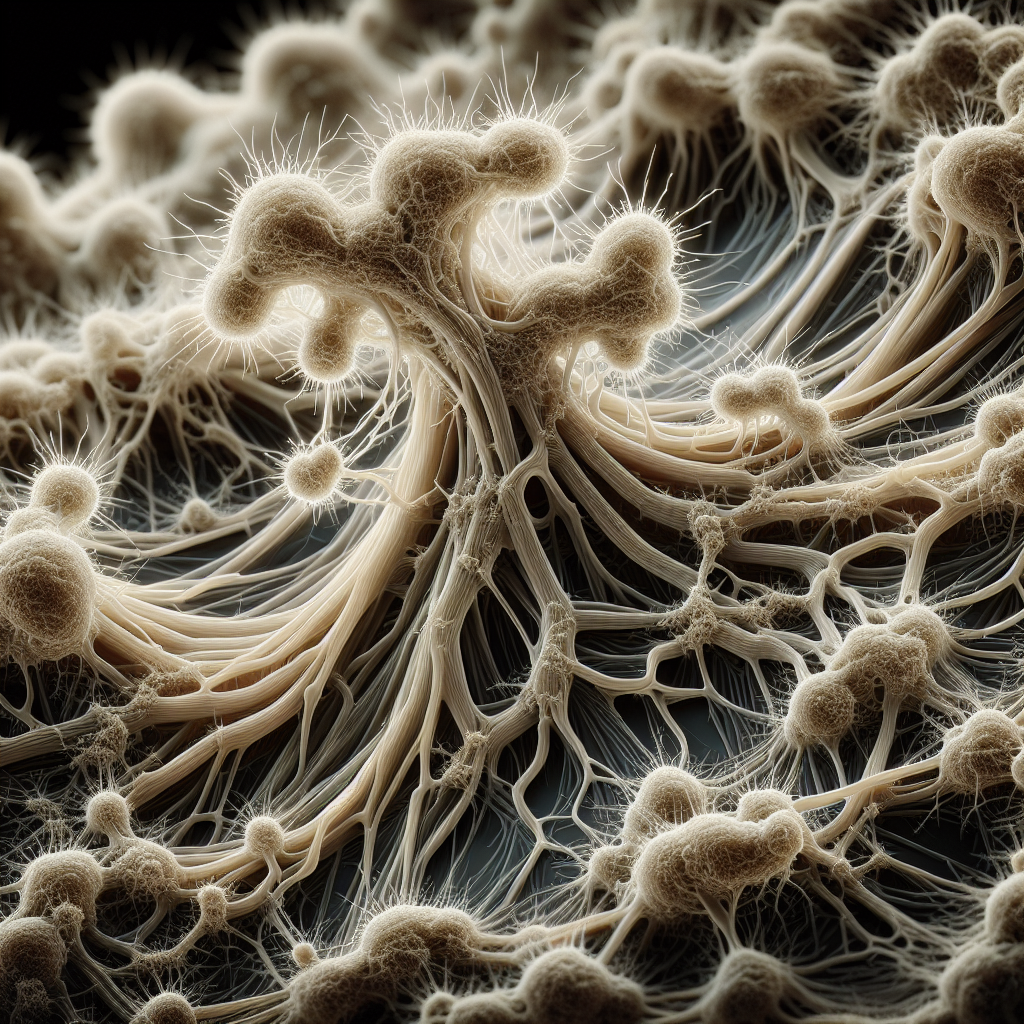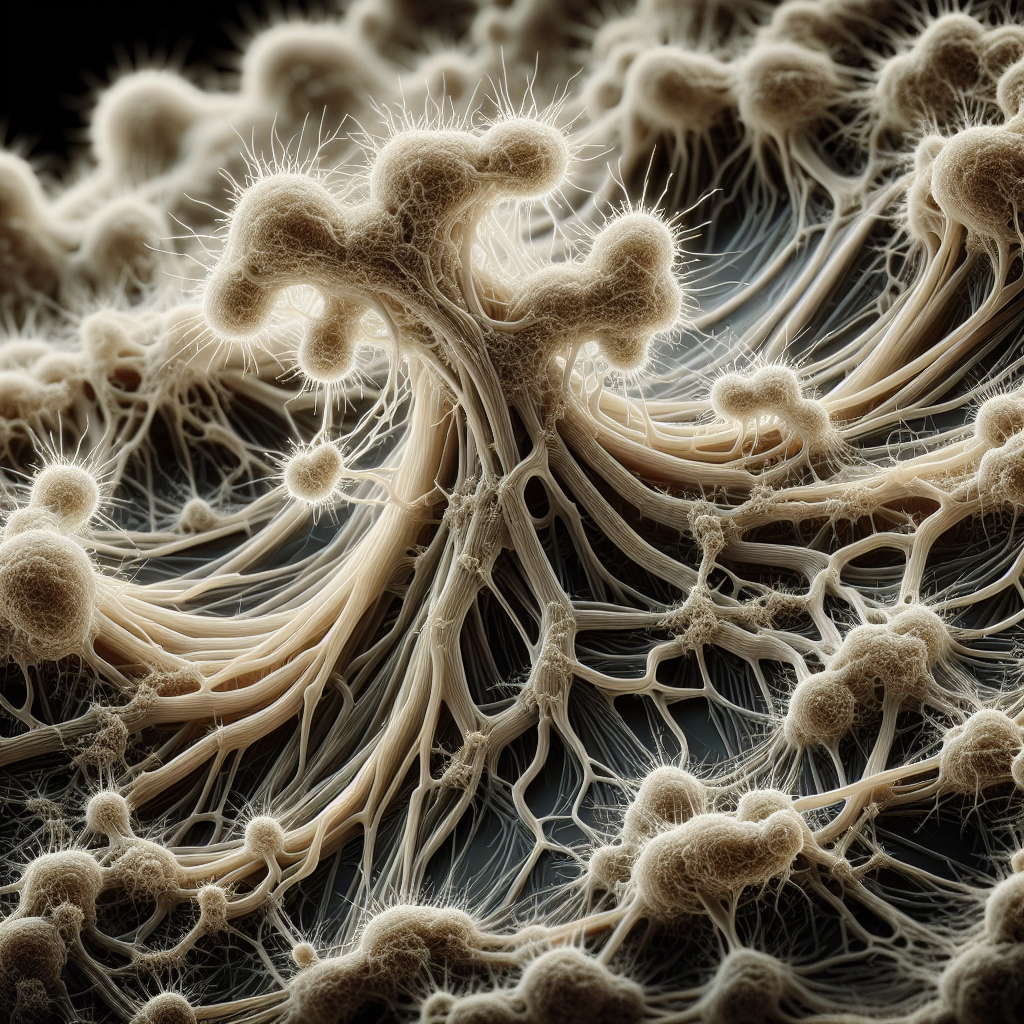In the fascinating marvel of nature, lies a scarcely known yet integral component – Mycelium Soil. This article acquaints you with the intriguing world of mycelium soil, drawing attention to its botanical significance, its essential role in maintaining ecological balance, and its potential contribution to groundbreaking sustainability solutions. Get ready to explore the intricate network of mycelium in the soil, discover its scientific importance, and understand how it can revolutionize the future of regenerative agriculture and environmental rehabilitation.
Understanding Mycelium Soil
The realm of soil biology is vast and intricate, with a multitude of life forms contributing to the vitality and richness of this ecosystem. One such organism is the mycelium.
Definition of Mycelium
Mycelium is the vegetative part of a fungus, consisting of a complex network of interwoven filaments called hyphae. It resembles a dense web spreading extensively under the soil surface, often extending for miles. This subterranean network is responsible for nutrient absorption, facilitating the fungi’s role as nature’s decomposers and symbiotants.
Importance of Mycelium in the Soil Ecosystem
The presence of mycelium in soil cannot be underestimated. Its contribution to the decomposition process, nutrient cycling, and plant symbiosis is integral to the balance of the soil ecosystem.
Life Cycle of Mycelium
The cycle begins with the germination of spores, leading to the formation of hyphae. As these hyphae continue to grow and branch out, they form the mycelium network. When conditions are ideal, fruiting bodies or mushrooms emerge, releasing spores to complete the cycle.
The Ecological Significance of Mycelium
Fungi and their mycelium play crucial ecological roles, contributing to decomposition, soil fertility, and carbon sequestration.
Role of Mycelium in Decomposition
Mycelium plays an essential role in decomposition, breaking down organic matter into simpler, usable forms. Mycelium’s ability to secrete enzymes facilitates the digestion of complex organic compounds, releasing key nutrients into the soil.
Mycelium and Soil Fertility
Besides decomposition, mycelium contributes to soil fertility by mining inaccessible nutrients and making them available to plants. This enhances soil nutrient content and promotes plant growth.
Mycelium and Carbon Sequestration
In the broader context of the global carbon cycle, mycelium plays a role in carbon sequestration. By decomposing organic material and storing carbon in soils, mycelium contributes to mitigating climate change.

Mycelium and Plant Health
Mycelium forms symbiotic relationships with plants, enhances disease resistance, and significantly influences plant nutrition.
Mycorrhizal Relationships and Mycelium
In the context of plant health, the mycorrhizal relationship between mycelium and plants is of great significance. Through this symbiotic relationship, mycelium assists in nutrient absorption while gaining sugars in return.
Mycelium and Plant Disease Resistance
Mycelium also aids in fortifying plant immunity against diseases. It secretes enzymes that suppress plant pathogens, helping the plant resist infections and diseases.
Mycelium and Plant Nutrition
Mycelium plays a vital role in plant nutrition. By decomposing organic material and making nutrients accessible, mycelium supports plant growth and productivity.
Mycelium and Soil Biodiversity
Mycelium is integral to soil biodiversity, acting as a food source for soil organisms, promoting biodiversity through its networks, and playing a role in soil remediation.
Mycelium as a Food Source for Soil-dwelling Organisms
Mycelium serves as a crucial food source for a variety of soil organisms, from microscopic bacteria to larger creatures like earthworms.
Biodiversity Promotion through Mycelium Networks
Mycelium networks help maintain soil biodiversity. They form a communication highway, allowing for the exchange of nutrients and signals between different plant species, enhancing the overall ecosystem diversity.
Role of Mycelium in Soil Bioremediation
Mycelium also plays a role in bioremediation, the process of cleaning up contaminated soils. Some fungi are capable of accumulating heavy metals, effectively reducing their toxicity in the environment.

The Physical Properties of Mycelium Soil
Mycelium influences soil structure, water retention, and other physical properties.
Mycelium and Soil Structure
The intricate mycelium network improves soil structure by binding soil particles together, enhancing soil stability and preventing erosion.
Impact of Mycelium on Soil Water Retention
Mycelium also contributes to soil water retention. Its network creates pores in the soil, improving its capacity to retain and evenly distribute water.
Improvement of Soil Physical Properties through Mycelium
Through its contributions to soil structure and water retention, mycelium plays a crucial role in improving the soil’s physical properties, directly influencing its fertility.
Mycelium and Soil Quality
Mycelium profoundly affects soil nutrient cycling, organic matter content, and soil pH, impacting overall soil quality.
Mycelium and Soil Nutrient Cycling
Mycelium enhances soil nutrient cycling by decomposing organic matter and mineralizing nutrients, making them available for plant uptake.
Improvement of Soil Organic Matter by Mycelium
By decomposition process, mycelium contributes to the buildup of soil organic matter, an essential determinant of soil fertility.
Impact of Mycelium on Soil pH
Mycelium can influence soil pH by secreting organic acids during decomposition, shaping the soil’s chemical properties and influencing nutrient availability.
Mycelium in Different Soil Types
Mycelium exists in various soil types, playing crucial roles in different soil environments and displaying adaptability in different soil conditions.
Existence of Mycelium in Various Soil Types
Mycelium is found across a plethora of soil types, from sandy to clayey soils, its presence dictated more by organic matter content and climate conditions than the soil’s mineral composition.
Role of Mycelium in Different Soil Environments
Each soil type presents distinct challenges, and the role of mycelium varies accordingly. It can contribute to water retention in sandy soils, while in heavier clayey soils, it may enhance structure and porosity.
Adaptability of Mycelium in Different Soil Conditions
Mycelium’s ability to adapt to different soil conditions underscores its resilience. Its growth parameters, such as hyphal branching or enzyme production, can change based on soil type and environmental conditions.
Cultivation and Improvement of Mycelium in Soil
To enhance soil health and productivity, efforts can be made to cultivate and enhance mycelium in the soil.
Methods of Mycelium Cultivation
Mycelium can be cultivated by introducing spores or inoculating soil with mycelium-rich compost or biocontrol products that foster the growth of these beneficial organisms.
Factors Affecting Mycelium Growth
Several factors influence mycelium growth, including availability of organic matter, soil pH, temperature, and moisture, which all need to be considered for successful cultivation.
Incorporating Mycelium into Farming Practices
By incorporating mycelium into farming practices, such as applying mycorrhizal inoculum at planting or incorporating fungal compost into soil, soil fertility and plant health can be significantly improved.
Beneficial Mycorrhizal Fungi and Mycelium
Mycorrhizal fungi form beneficial relationships with mycelium, contributing to diverse ecosystems and commercial applications.
Types of Beneficial Mycorrhizal Fungi
Numerous types of mycorrhizal fungi engage in beneficial relationships with plants, among the most important being arbuscular mycorrhizal fungi and ectomycorrhizal fungi.
Host Plants of Mycorrhizal Fungi
These fungi form associations with a wide range of host plants, including most agricultural and horticultural crops, trees, and shrubs, boosting their health and productivity.
Commercial Application of Mycorrhizal Fungi
From agriculture and forestry to landscaping and environmental restoration, mycorrhizal fungi and their mycelium networks offer numerous commercial applications, providing sustainable solutions for enhancing plant and soil health.
Threats to Mycelium and Conservational Measures
Despite their importance, mycelium populations face several threats, and conservational efforts are necessary to maintain their abundance.
Common Threats to Mycelium
Threats to mycelium include intensive farming practices, deforestation, and pollution, which can degrade soil health and reduce mycelium populations.
Impact of Pesticides and Chemicals on Mycelium
Pesticides and chemicals also pose significant threats. Many fungicides, herbicides, and other agrochemicals are toxic to mycelium, disrupting their growth and symbiotic interactions.
Measures to Conserve and Enhance Mycelium in Soil
Conservational measures include utilising organic farming practices, reducing chemical inputs, preserving forested areas and promoting biodiversity. Supplementing soil with mycelium-rich compost and biocontrol products can also enhance mycelium populations and enrich soil health.
In summary, mycelium holds immense importance in soil health, playing crucial roles in nutrient cycling, decomposing organic material, and fostering plant health. Efforts to understand, conserve and augment mycelium populations can lead to sustainable soil management and healthier ecosystems.
